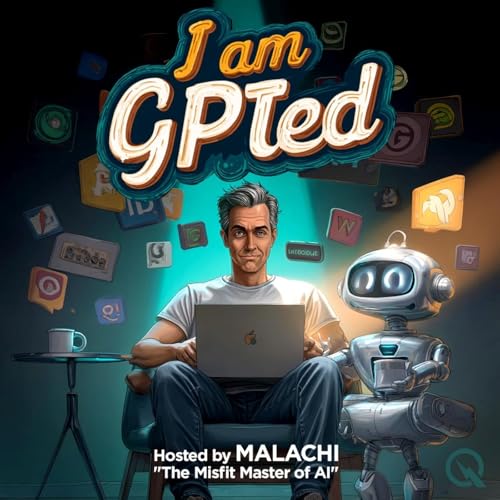[Cheerful lo-fi intro music fades up, then down.]
Welcome to “I Am GPTed,” where the future is now, the jargon is minimal, and I—Mal, your Misfit Master of AI—am here to give you practical large language model tips that even your grandma could use (but probably won’t, because she’s still mad at Alexa for not understanding her accent).
Today’s episode: The Prompt, The Myth, The Malfunction.
You know how people say there are no stupid questions? That’s adorable. But there are definitely *ineffective prompts*. So, let’s fix that, shall we?
Let’s talk about a prompting technique that actually works: **role prompting.** Simple concept, big difference. Instead of asking, “Can you help write a resume?” try “Act as if you’re a seasoned tech recruiter—write me a resume that stands out in the AI industry.” Why? Because when you frame the task with a persona and a clear role, the AI stops being generic and suddenly gets a personality upgrade from “potato” to “potato wearing a suit.”
**Before:** “Write a newsletter about home security systems.”
**After:** “Act as a home security consultant. Write a punchy, expert newsletter for homeowners who know nothing about security systems—make it simple but make me sound like a genius.”
As if by magic, the output goes from bland oatmeal to a chef-made parfait. Still probably too many buzzwords, but hey, we can’t have everything.
Now, a practical use case you probably haven’t tried: *delegating your daily summaries.* Whether you’re in HR, sales, or you’re just trying to remember why you walked into the kitchen, try this: Each day, paste your meeting notes, bullet points, or even your rambling thoughts into ChatGPT, Claude, or Gemini. Prompt: “Act as my executive assistant. Summarize today’s events, highlight what’s actually urgent, and, if possible, remind me to drink water.”
You get a tidy snapshot of your day—plus self-care reminders. AI: not just making you smarter, but sneakily keeping your plants alive.
Now, confession time: The most common mistake? *Not giving enough detail or context in a prompt.* Yes, I do this too. Usually when I’m feeling lazy or overconfident, I’ll type, “Summarize this report.” What I get back? Summaries so vague they could apply to a trip to the grocery store. Learn from my chronic under-explaining: always guide the AI with exactly what you need, even if you feel like you’re micromanaging a digital toddler.
On to your AI workout routine—a simple exercise to build muscle for your next digital conversation: Pick something mundane, like “how to make toast,” and challenge the AI in three ways.
- First, ask for a simple recipe.
- Then, ask it to role-play as a chef explaining it to a five-year-old.
- Finally, request a bullet-point summary suitable for a tweet.
Notice the differences. This isn’t just busywork; it trains you to see how role, audience, and format radically change the results.
One last tip for evaluating AI-generated content: Ask yourself, “Would I bet lunch money on this being helpful for a real human?” If something feels off or too robotic...it probably is. Always check, trim, and sprinkle your own flavor on top. The best AI content is a team effort—half genius, half you.
That’s all for this episode of “I Am GPTed,” where our prompts are specific and our humility is…well, present.
Don’t forget to hit subscribe so you’re first in line for more AI tricks and accidental wisdom. Thanks for listening—seriously, you could have been anywhere, and you picked here. I’m flattered.
For more podcasts and human-sounding AI, visit QuietPlease.ai—yes, all spelled out, because this show is a Quiet Please production.
Now go forth, prompt with purpose, and remember: if all else fails, add “please” to your prompt. It might not help the AI, but it will make you a better person. Catch you next time!
For more check out https://www.quietperiodplease.com/
and for some great deals go to https://amzn.to/4nidg0P
This content was created in partnership and with the help of Artificial Intelligence AI
Más
Menos
 4 m
4 m 4 m
4 m 4 m
4 m 4 m
4 m 5 m
5 m 4 m
4 m Nov 1 20254 m
Nov 1 20254 m Oct 31 20255 m
Oct 31 20255 m
